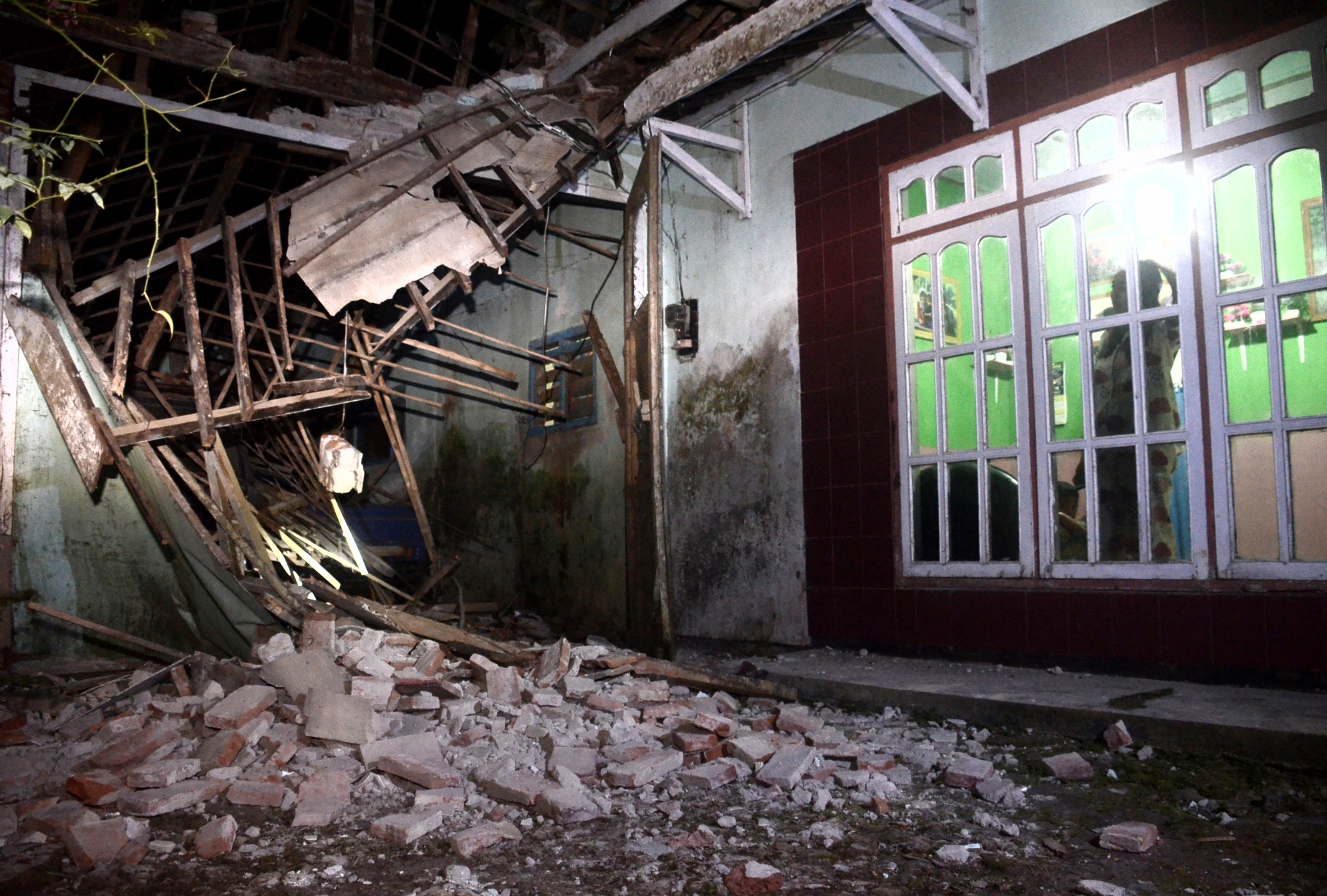At least eight people killed after 6.0-magnitude earthquake hits Indonesia’s East Java

A strong earthquake on Indonesia’s main island of Java has killed eight people, including a woman whose motorcycle was hit by falling rocks, and damaged more than 1300 buildings, officials say.
The US Geological Survey said the magnitude 6.0 quake struck off the island’s southern coast at 2pm on Saturday.
It was centred 45 kilometres south of Sumberpucung town of Malang District in East Java province, at a depth of 82km.
Rahmat Triyono, the head of Indonesia’s earthquake and tsunami centre, said the undersea tremblor did not have the potential to cause a tsunami.
This was the second deadly disaster to hit Indonesia this week, after Tropical Cyclone Seroja caused a severe downpour Sunday that killed at least 174 people and left 48 still missing in East Nusa Tenggara province.
Some victims were buried in either mudslides or solidified lava from a volcanic eruption in November, while others were swept away by flash floods. Thousands of homes with damaged.
Saturday’s quake caused falling rocks to kill a woman on a motorcycle and badly injured her husband in East Java’s Lumajang district, said Raditya Jati, spokesperson for the National Disaster Mitigation Agency.
He said about 1189 homes and 150 public facilities, including schools, hospitals and government offices, were damaged. Rescuers retrieved four bodies from the rubble in Lumajang’s Kali Uling village. Three people were also confirmed killed by the quake in Malang district.
‘My heart was racing’
Images from the scene showed a ceiling caved in at a hospital ward and debris strewn across the floor of the local parliament in Blitar, a city southwest of Malang.
“I had just finished praying and was changing my clothes when suddenly the quake struck,” Malang resident Ida Magfiroh told AFP.
“It was pretty strong and went for a long time. Everything was swaying… My heart was racing.”
Indonesia, a vast archipelago of 270 million people, is frequently struck by earthquakes, volcanic eruptions and tsunamis because of its location on the “Ring of Fire”, an arc of volcanoes and fault lines in the Pacific Basin.
Among its string of deadly quakes was a devastating 2004 tremor measuring 9.1 magnitude that struck off the coast of Sumatra and triggered a tsunami that killed 220,000 throughout the region, including about 170,000 in Indonesia.
The Boxing Day disaster was one of the deadliest natural disasters in recorded history.
In 2018, a powerful quake shook the island of Lombok and several more tremors followed over the next couple of weeks, killing more than 550 people on the holiday island and neighbouring Sumbawa.
Later that year, a 7.5-magnitude quake and a subsequent tsunami in Palu on Sulawesi island left more than 4,300 people dead or missing.
In 2006, a 6.3-magnitude quake rocked a densely populated region of Java near the city of Yogyakarta, killing around 6,000 people and injuring tens of thousands more.
A year earlier, a quake measuring 8.7 magnitude struck off the coast of Sumatra, which is particularly prone to quakes, killing 900 people and injuring about 6,000.
With additional reporting by AFP












